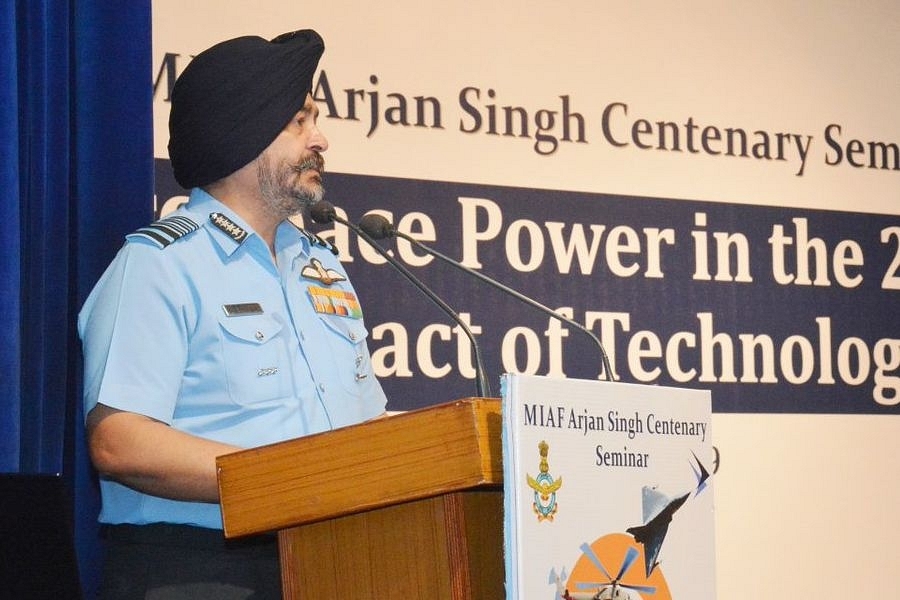Insta
Timely Induction Of Rafale Could Have Further Skewed Results Of Balakot Strike In India’s Favour: IAF Chief BS Dhanoa

Air Chief Marshal BS Dhanoa addressing a seminar on Aerospace Power in the 2040s - Impact of Technology, held at Air Force Auditorium, Subroto Park, New Delhi (@IAF_MCC/Twitter)
Indian Air Force (IAF) chief BS Dhanoa on Monday (15 April) said that technology was on India’s side in the Balakot air strikes. He also asserted that results would have been further tilted in India’s favour if the Rafale jets were inducted in time, Times Now has reported.
"In the Balakot operation, we had technology on our side, and we could launch precision stand of weapons with great accuracy. In the subsequent engagements, we came out better because we upgraded our MiG-21s, Bisons, and Mirage-2000 aircraft," Air Chief Marshal Dhanoa was quoted in the report as saying.
The IAF chief was addressing a gathering at a seminar on aerospace power of the future and the impact of technology.
"The results would have been further skewed in our favour had we inducted the Rafale aircraft in time," Dhanoa said.
On 26 February, the IAF had struck a Jaish-e-Mohammed (JeM) terrorist training camp in Balakot area of Pakistan, in response to the 14 February terror attack in Pulwama of Jammu and Kashmir in which over 40 CRPF personnel were martyred.
The Pakistan Air Force retaliated the next day by unsuccessfully targeting various military installations in Jammu and Kashmir.
"In the proposed induction of the Rafale and S-400 surface-to-air missile system, in the next two-four years, once again the technological balance will shift in our favour, like it was in 2002 during Operation Parakaram during the last stand-off," added the IAF chief.
Support Swarajya's 50 Ground Reports Project & Sponsor A Story
Every general election Swarajya does a 50 ground reports project.
Aimed only at serious readers and those who appreciate the nuances of political undercurrents, the project provides a sense of India's electoral landscape. As you know, these reports are produced after considerable investment of travel, time and effort on the ground.
This time too we've kicked off the project in style and have covered over 30 constituencies already. If you're someone who appreciates such work and have enjoyed our coverage please consider sponsoring a ground report for just Rs 2999 to Rs 19,999 - it goes a long way in helping us produce more quality reportage.
You can also back this project by becoming a subscriber for as little as Rs 999 - so do click on this links and choose a plan that suits you and back us.
Click below to contribute.
Latest